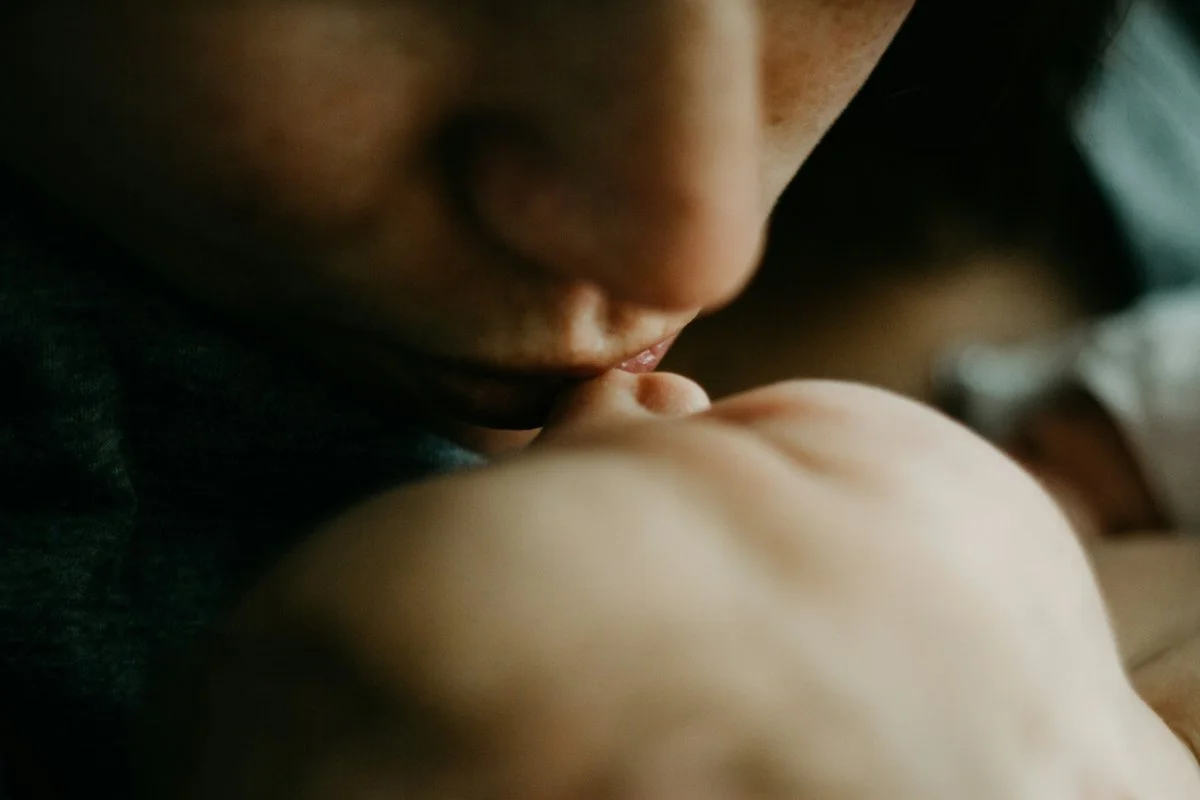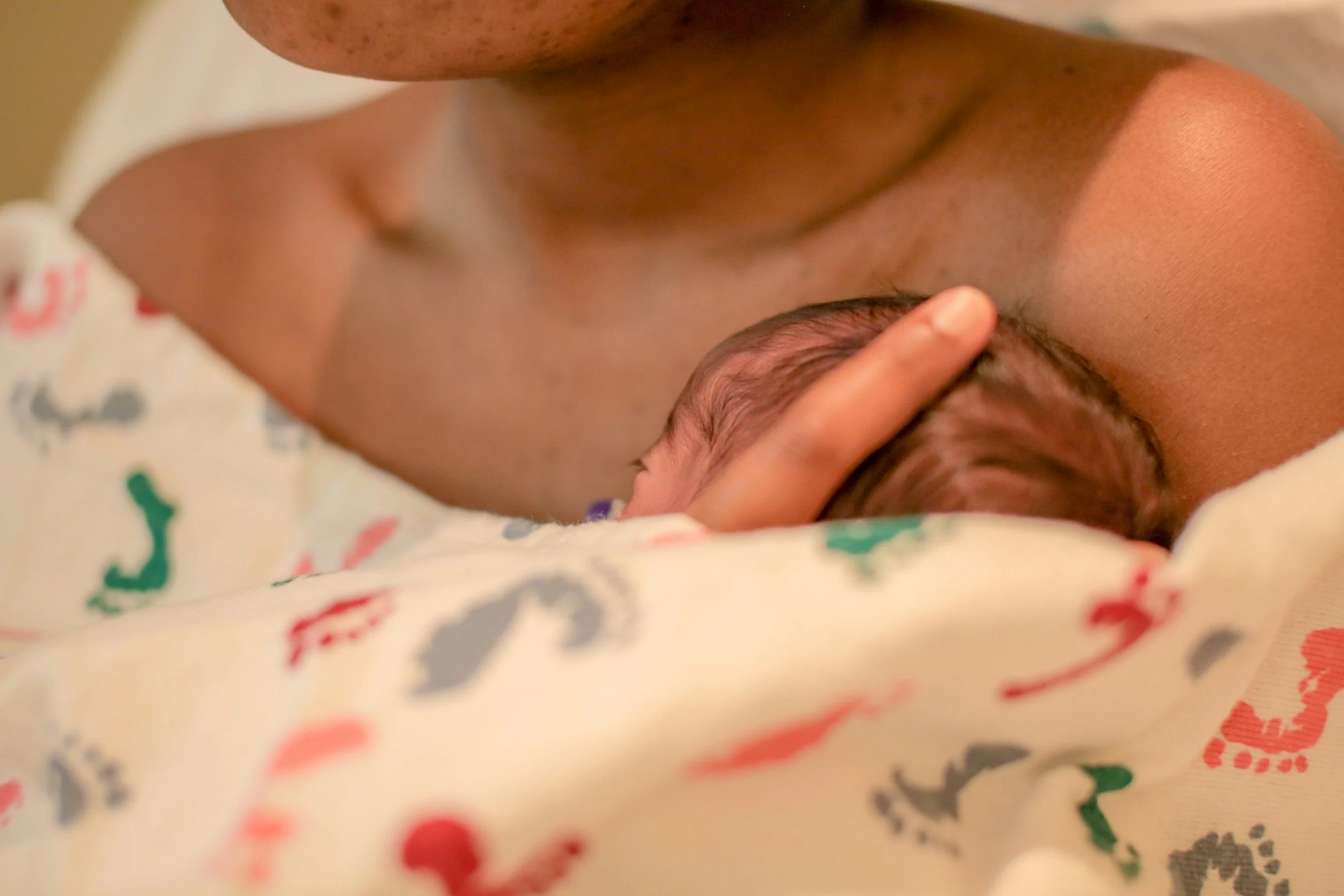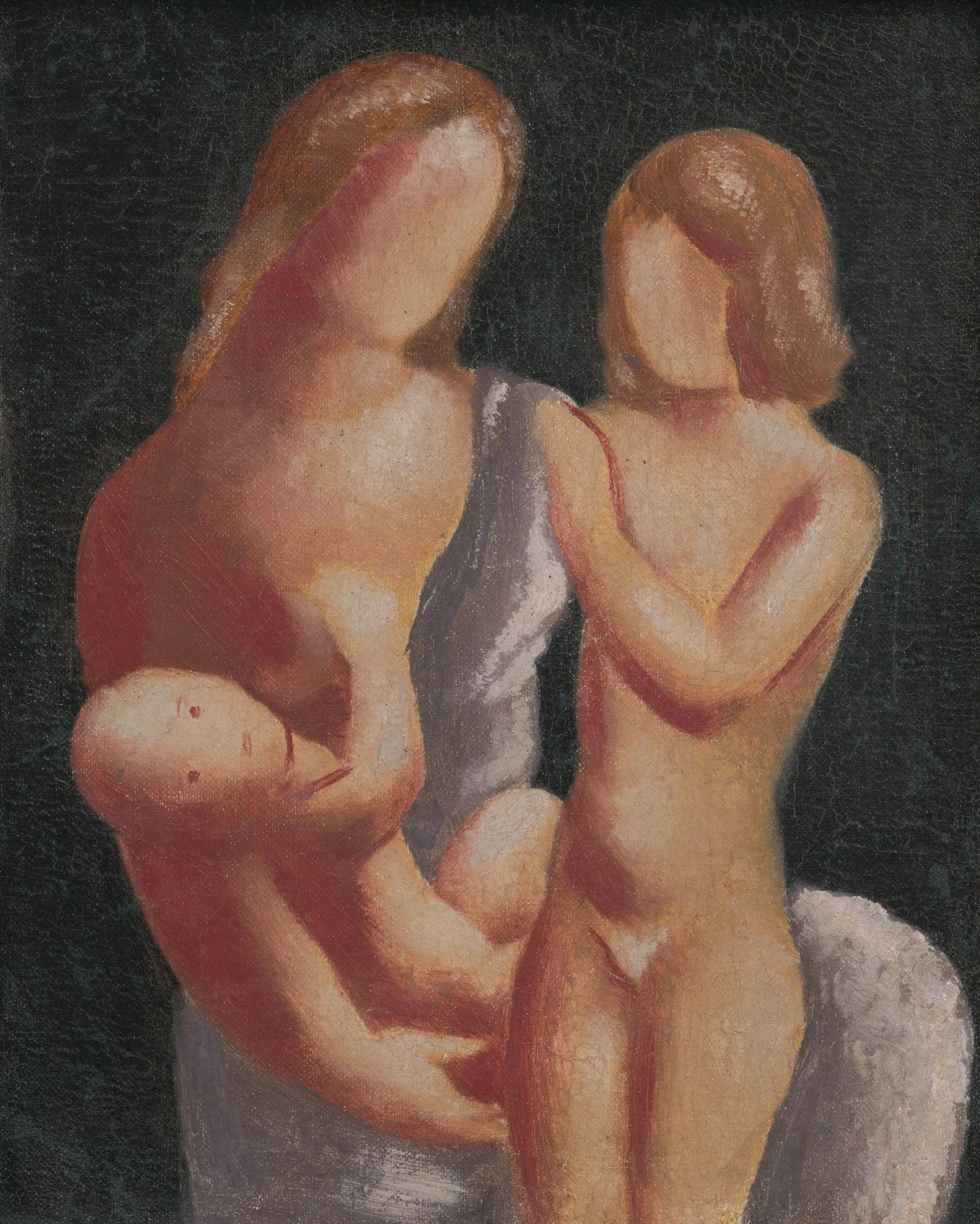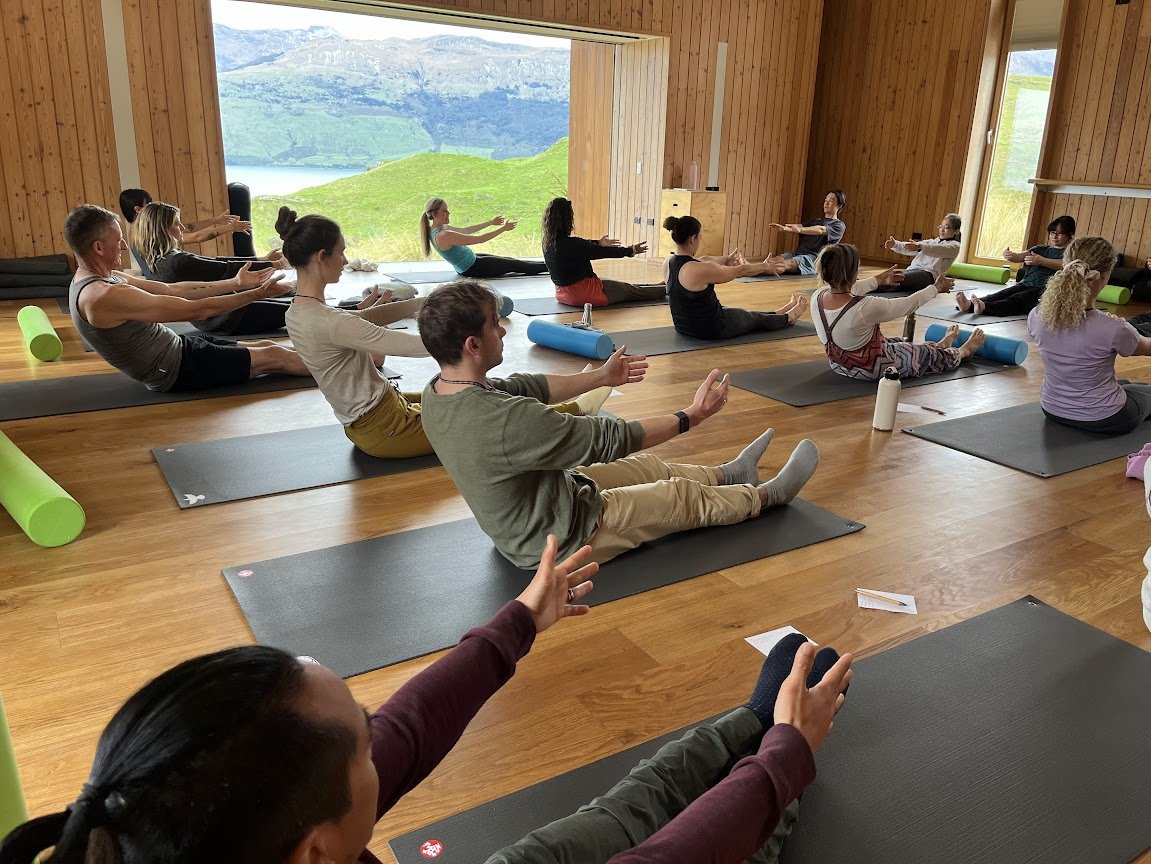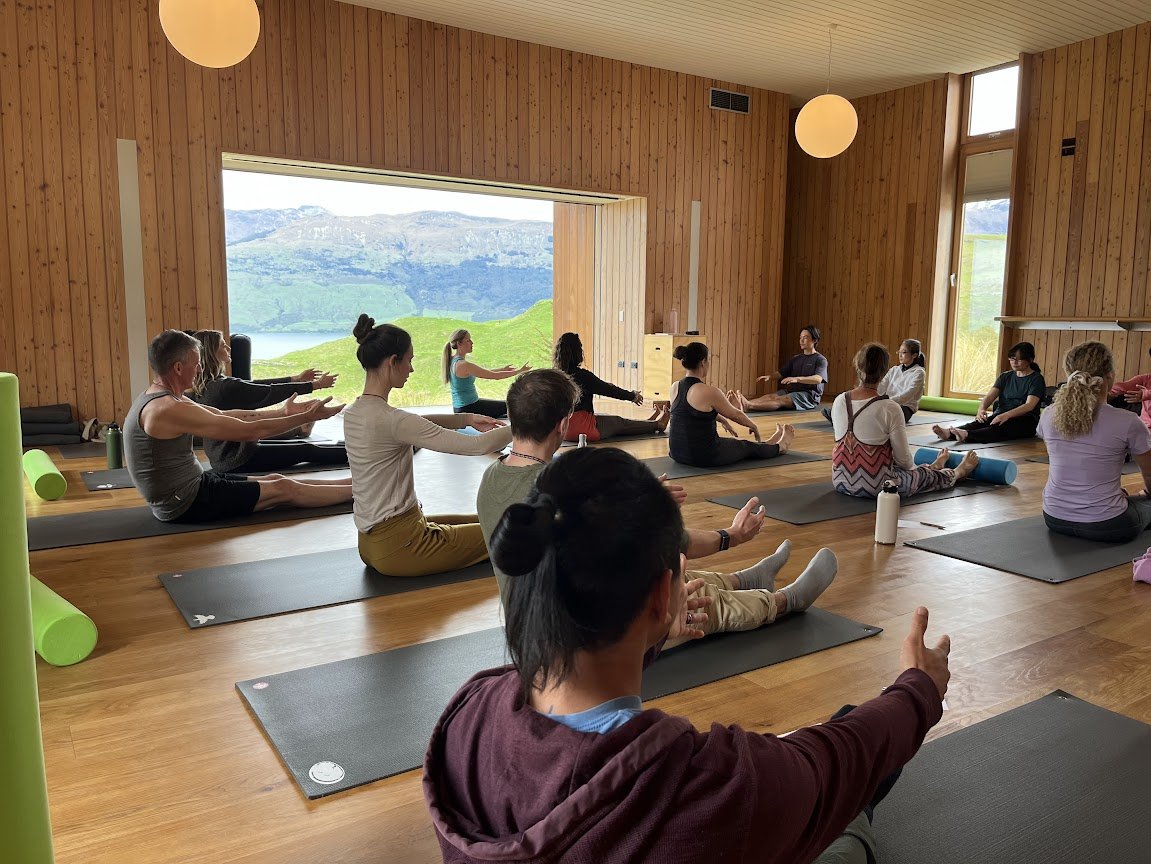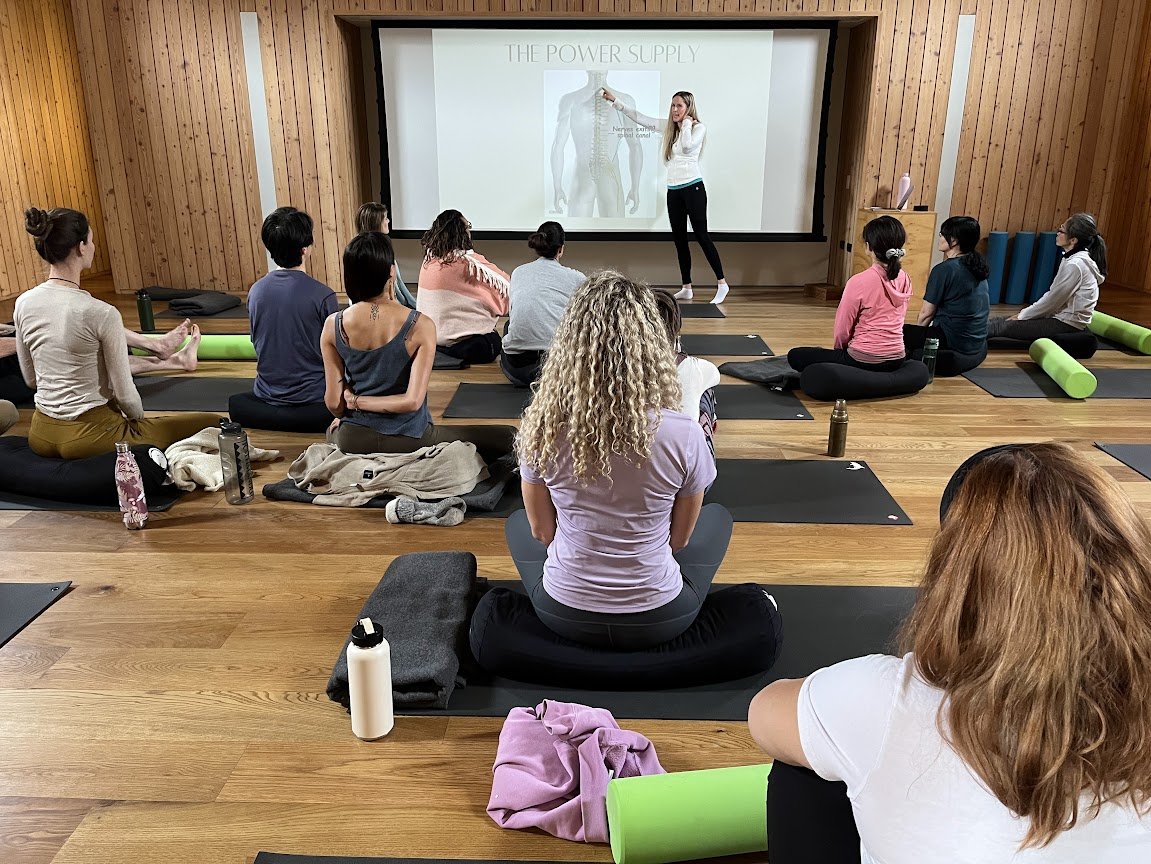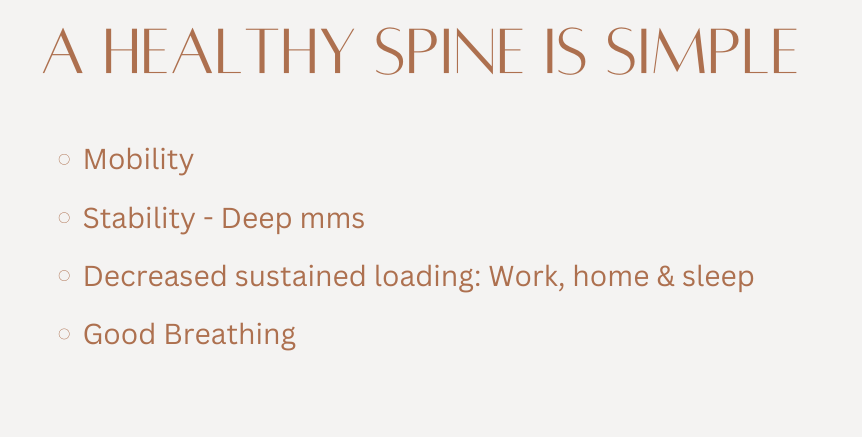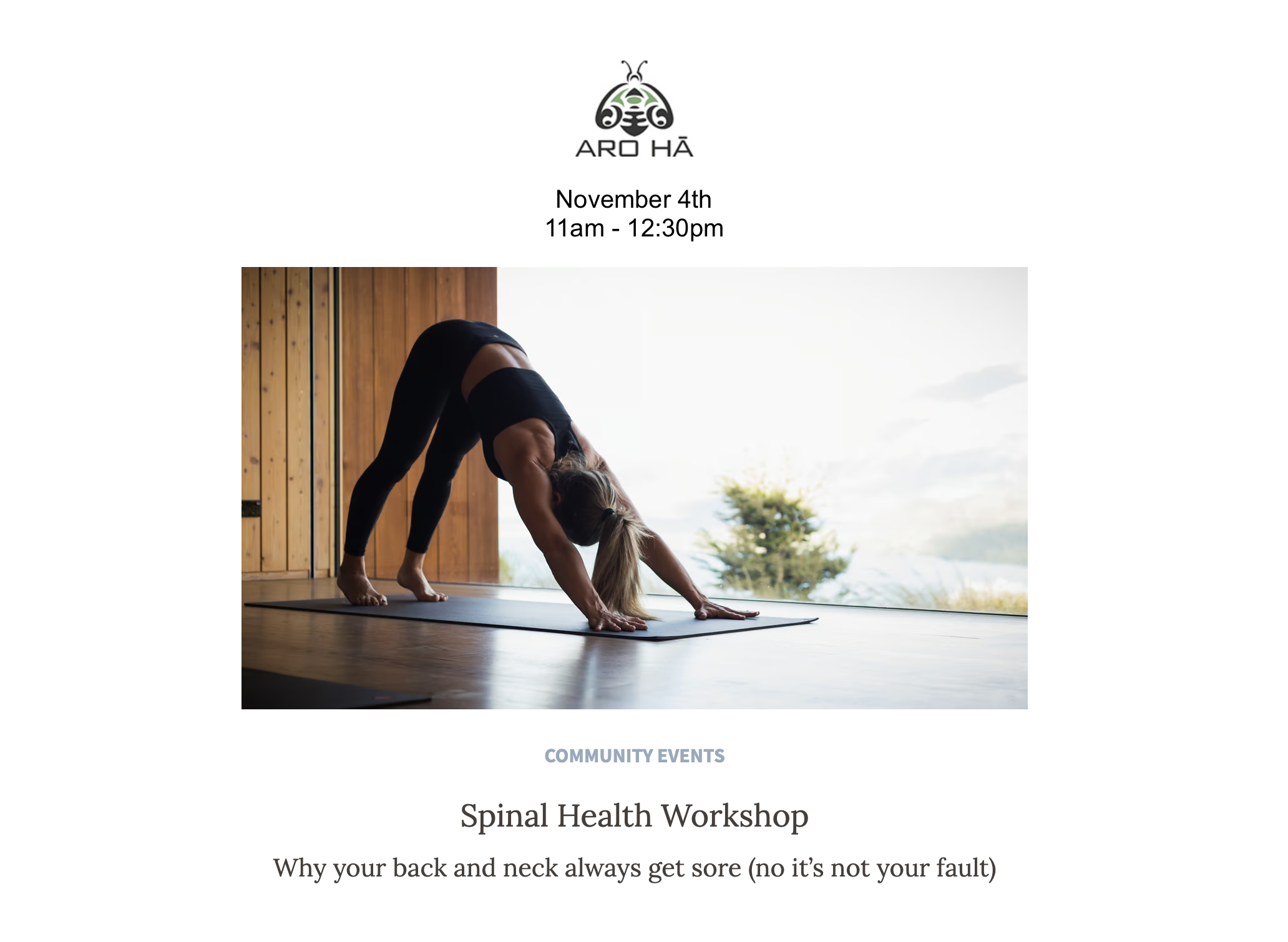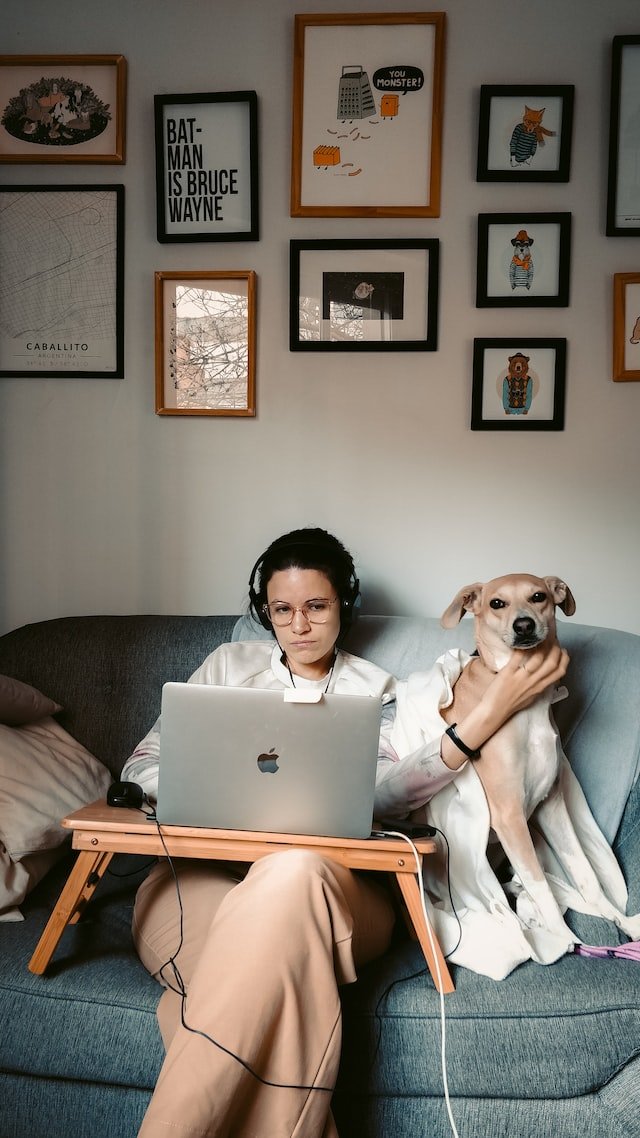
Aprivé Wellness Blog
When Can I Start Walking After a C-Section?
Learn when it’s safe to start walking after a C section, how to ease back into movement, and what to expect in your recovery timeline.
Learn when it’s safe to start walking after a C section, how to ease back into movement, and what to expect in your recovery timeline.
My First Walk After a C Section
Five days after my second C section, I was recovering in a quiet seaside town in southern New Zealand. The air was cool, my baby was snuggled against my chest, and for the first time since giving birth, I felt ready to move. Not just to get somewhere like around the house, or from the car to the door, but really take some strides.
I wrapped my coat tightly and took a few careful steps across the sand. At first, it felt incredible. The sunlight, the sea breeze, and the sense of freedom. But after about ten metres, I felt a pulling across my scar. After fifteen metres, the pulling became painful so I stopped.
“That’s enough for today,” I whispered to my tiny boy. Slowly I turned back towards my family and walked much more slowly back to them. My husband helped me up the sandy bank, and I eased down onto the soft grass. It wasn’t far, but it was progress.
That little walk felt like a win. I was moving again!
Mindset and recovery: C Section recovery is similar to injury recovery
In my fifteen years as a physiotherapist, I’ve seen how much our mindset influences healing. People who feel calm, informed, and optimistic before surgery often recover faster and feel more confident afterwards. Research backs this up too.
After my first C section, an emergency cesarean after a very long labour, I had no idea what to expect. My second was planned, and I assumed it would be easier. But in those early days, I was still sore, still slow, and relying on pain relief just to shower or take my daughter to the playground next door.
I remember feeling frustrated and even disappointed. I expected a faster recovery with a planned C-Section, and found myself comparing my two cesarean experiences. But recovery isn’t a competition, and it’s never identical from one birth to another. Looking back I should known remembered what I tell my patients: It’s a process of patience and gentle persistence. However, while my positive thinking and my expectation that I would recovery quickly didn’t help in the very early days, it did help soon after.
A lovely mum and bub in the sunlight
My C Section Recovery Timeline:
Wondering How long will the pain last? When can I move comfortably and safely? Here’s my experience:
By about day ten, something began to change. The sharp pain faded to a dull ache. I could move more freely, stand a little taller, and walk further before needing to rest. By day 15, I was able to wear my baby in the front pack and go for longer walks to a coffee shop and explore my surroundings.
This improvement was down to a few reasons. I truly believe they were:
I wasn’t learning early motherhood for the first time. This took away a lot of worry/concern.
My surgery had been planned which can influence how the surgery is done eg. Surgeons aren’t rushing
I planned ahead with some Postnatal essentials I knew I would need.
I expected I would recovery faster. Friends who had elective cesareans had told me it gets easier quickly! That stayed in my mind.
(*Important note: The information in this post is for general educational purposes only and is not a substitute for medical advice, diagnosis, or treatment. Always consult your doctor, obstetrician, or midwife before making changes to your recovery, exercise, or lifestyle after a C-section. Physio Caitlin (Caitlin Reid/Wilson) accepts no responsibility or liability for any injury, loss, or outcome that may occur as a result of following this information.)
Essential Things to make Walking after C Section Easier
The baby and maternity market is flooded with products. I think of it like the wedding market! Add the word ‘baby’ or ‘maternity’ to a product and it gets a huge price tag. It’s almost impossible to wade through the millions of products to find what’s just a novelty product versus what can really accelerate your healing and help you feel supported. The more supported you feel, the more ready you will be to start moving and walking. So in general, these items and strategies really helped me:
Compression garments for incision and core support
Heaps of water and high protein snacks to help keep me going when my needs were so high
A pain management plan to take them in a staggered approach to prevent my pain from peaking
Breastfeeding positions that didn’t strain my scar
Gentle core activation exercises for stability early on to make caring for my toddler and baby easier
Once those supports were in place, my recovery felt smoother. I wasn’t just coping, I was healing.
If you want to feel prepared too, my C Section Recovery Course ($29) walks you through everything that helped me like pain relief tips, scar care, movement, and rebuilding strength. Sure this is something I’m selling, but I made it during my maternity leave as I’m on a mission to provide better support to c section mums. That’s why the price is low. Check out the page and the intro video. If it’s not for you, no worries! But it’s everything I wish I’d known that really made my life easier.
Little cutie saying “i want to go for a walk!”
The Power of Calm and Confidence during Healing
As a second-time mum I knew what to expect. Not just in the surgery itself, which also helped, but in every moment following it. That experience helped me stay calm even in moments of soreness. I didn’t have to learn how to swaddle, or how to hold a tiny baby’s wobbly head while helping them latch. I’d done it all before. And while every baby is different, that knowledge helped me feel more confident and more ready to get moving safely.
Plus, the actually surgery was done slowly. Now this part is out of our control of course, but I did think it helped.
When Can I Start Walking After a C Section?
This is the question I get asked so much. So here’s a general answer: You can usually start walking quite early, even in the hospital. Once your catheter is removed, gentle steps around your room are encouraged. These early movements improve circulation, help your digestion, and reduce the risk of blood clots after surgery.
When you’re home, keep up light movement throughout the day. Try to stand and walk around each hour or two, even just from room to room. Avoid staying in bed or on the couch for long stretches. Compression stockings can help during those first few weeks, and most women are prescribed medication like Clexane to further reduce DVT risk.
Walking for Exercise After a C Section
Walking is one of the safest and best exercises after a cesarean, but go slowly and listen to your body.
Here’s a gentle timeline to guide you:
Week 1–2: Small, slow walks around your house or garden, and around the block.
Week 3–4: Short strolls down the street and any try not to add any load if you’re doing longer walks. Eg. no front pack.
Week 6 and beyond: Gradually increase your pace and distance. Most women feel ready for some exercise at this point.
How do I know if I’ve overdone it after a csection?
I got so excited by my turning point around day 15 that around day 17, I popped my newly turned 3-year-old in the pram and headed off. Ignoring my own professional advice to only walk short distances in the first 2-3 weeks, I headed off to the lakeside playground. I felt good on the way there and enjoyed watching my visiting sister push my daughter and her son on the swings while I fed my baby. How dreamy. As we started walking home though, my grumbling SIJ (sacroiliac joint) in my lower right hip area became sore. With each step it got sorer, and the load of my baby in the front pack didn’t help. I’d gone too far, and pushing the pram with a heavy 3-year-old on the way home made it worse. It eased that afternoon, but I knew I’d overdone it. The next day I rested and felt great. Don’t do what I did. Especially if you have another child. Keep the longer walks for week 3+. If you feel an increase in soreness or your bleeding on your pad has increased, you’ve probably overdone it. If your pain or bleeding has changed dramatically let your medical team/midwife know ASAP.
Top tips to help you walk after c section successfully:
Take pain relief 30 minutes before you plan to go for your walk. This allows it to ‘kick in’ in time to support your endeavour.
Use the pram/stroller in the early weeks. This added support is great if you get sore halfway through.
Plan to do a short circuit. You can always do two laps if you’re feeling great! But a circuit prevent you getting stuck somewhere if you go too far and are too sore to get home.
Start gentle core activation exercises before you start walking further. ‘Waking up’ your core before more demanding physical tasks is vital. Get guidance on this fromy my C Section Recovery Course or a women’s health physio in person.
Remember, recovery is deeply individual. Some women progress faster, others slower, and both are completely normal. If you feel pulling, stinging, or excessive fatigue, take a break. Listen to your body better than I did! You’re rebuilding from major surgery as well as slowly rebuilding your body after a long nine months of pregnancy. It’s easy to want to get going again,and absolutely do! But be gentle on yourself and think regular, small walks rather than long exhausting walks.
That first walk after a C section might be only a few steps, but it’s a powerful one. Every little bit of movement is a sign of healing and strength returning. Be patient, be gentle, and celebrate every milestone. With preparation, knowledge, and compassion for yourself, you can make your C section recovery smoother and more empowering.
You’ve got this.
Want to feel supported at every stage of your cesarean recovery?
Check out the trailer for my $29 C Section Recovery Course, where I’ll guide you through gentle exercises, movement confidence, and practical tips to help you heal well and feel like yourself again.
Invest in your recovery with our C-section Recovery Course: Created by a Physiotherapist and mum who’s been there too. For a single upfront payment, you'll get: - Full access to all video modules and downloadable resources - Evidence-based advice, real-life tips, and tools you can actually use - Unlimited access - revisit any time, at your own pace No subscriptions. No upsells. Just everything you need to heal well, feel strong, and enjoy early motherhood — all in one place.
When Can I Resume Everyday Activities After a C-Section?
When Can I Resume Everyday Activities After a C-Section?
Wondering when you can walk, drive, or start exercise after a C-section? Discover safe recovery timelines and expert physiotherapist insights.
Wondering when you can walk, drive, or start exercise after a C-section? Discover safe recovery timelines and expert physiotherapist insights.
As a physiotherapist and c-section mum of two, I know how important clear, evidence-based guidance is during your C-section recovery. When you’re looking after your beautiful new little person, it’s often hard to prioritise your own recovery. But understanding a c-section recovery timeline can help you plan ahead. In this post, I’ll walk you through what the research says, what’s safe at each stage, and the small milestones you can celebrate along the way, plus a few first-hand learnings. From when you can start gentle walking, to driving after a C-section, you’ll find timelines, tips, and reassurance to help you heal with confidence.
(*Important note: The information in this blog is for general educational purposes only and is not a substitute for medical advice, diagnosis, or treatment. Always consult your doctor, obstetrician, or midwife before making changes to your recovery, exercise, or lifestyle after a C-section. Physio Caitlin (Caitlin Reid/Wilson) accepts no responsibility or liability for any injury, loss, or outcome that may occur as a result of following this information.)
Early recovery has a special timeline so you can get back to everyday activities. But strength and power recovery takes much longer. So be kind to yourself.
Are you wondering “When Can I Resume Everyday Activities After a C-Section?”
I was too. When I had my daughter via emergency cesarean, I found the discharge guidelines so vague and general. Like everyone else, I was told I couldn’t drive until 6-8 weeks (unless I really had to) and no exercise for a while. Plus, definitely no lifting heavier than my baby for 6 weeks. But what about everything else?
When could I start walking? And what about gentle exercise? Sure, wait until 6 weeks, but then what? Luckily as a physio, I have some extra insight into recovery and even wound recovery which helped. But even then, I wanted more information. After I had my son, I found the information even more unhelpful. How could I do almost nothing when I had a just-turned-3-year-old to look after? So here are the answers I wanted which will hopefully be helpful for you.
When you’re feeling incredibly sore in the early days of c-section recovery, knowing when you can get back to everyday activities after c-section can help you see the road ahead. But let’s start understanding wound healing.
C-Section Recovery: The 4 Stages of Wound Healing
Recovering from a c-section is a journey, and knowing what’s happening inside your body can give you reassurance along the way. Your incision heals in four natural stages, each with its own role in recovery.
1. Hemostasis (Immediate to 1–3 Days)
Right after surgery, your body works quickly to stop bleeding. Blood vessels tighten, platelets form a clot, and a protective scab begins to cover the wound.
2. Inflammation (Up to 6 Days)
In this phase, your immune system steps in like a clean-up crew, fighting bacteria, removing debris, and protecting against infection. You might notice some swelling, redness, or tenderness, which are normal signs of healing.
3. Proliferation (Days 4–24)
Now your body starts rebuilding from the inside out. Fresh collagen and new blood vessels create healthy granulation tissue, slowly strengthening the incision. This is when the wound begins to feel more secure.
4. Maturation/Remodeling (Weeks to Years)
The final stage is all about strengthening and softening. Collagen fibers reorganize, the scar becomes flatter and more flexible, and over time it blends more naturally with your skin. This process can continue for months, even up to two years.
What influences c-section wound healing rates?
Like any wound, c-section healing time depends on how your wound heals. This is influenced by lifestyle factors like smoking, and chronic illnesses like diabetes. Lifting and straining can also impede wound closure and healing times.
It’s not just your incision site that’s healing during c-section recovery
Don’t forget, wound healing is just one part of your postnatal healing journey. Your internal placenta wound is also healing, as are all the muscles that stretched and changed during your pregnancy. Every stage of c-section recovery is your body’s way of protecting, rebuilding, and restoring. Knowing what’s normal can help you feel more confident and trust the healing process.
How Long Does C-Section Recovery Take?
At 6 weeks: Most c-section wounds will have closed, allowing you to move around your home as normal. It’s also a great time to start gentle exercises that use your muscle strength, rather than simple mobility/pain management exercises. Start very slowly and be guided by a Physiotherapist.
Examples of things you might do at home at 6 weeks post c-section:
Return to normal chores (hopefully you’ve had some time off cleaning and anything strenuous)
Be able to lift things like your washing basket carefully as long as it’s no heavier than around 6kg.
When Can I Drive After a C-Section?
At 6 weeks you might start driving again (often doctors say you can drive once you can do everything required, including braking quickly and heavily, and turning your body to check your blind spots without soreness, which is often earlier than 6 weeks) Be guided by your own doctor and midwife on this.
Safe Exercises 6 Weeks After C-Section - examples
A gentle Mums and bubs class run by a trained health professional who understands postnatal healing
Workouts at home via postnatal apps such as Empowered Motherhood Program or my C-section Recovery Course.
Gentle deep core activation such as bent knee fall out and single leg lifts
Bridges
Pelvic floor: Concentrating on relaxing your pelvic floor as much as possible between lifting exercises (women’s health physios often note relaxing (not contracting) the pelvic floor after c-section can be difficult for most women)
Returning to Activity at 12 Weeks Post C-Section
At 12 weeks you’re probably feeling pretty ready to get moving a bit more. Not that it’s easy to find the time when you’re looking after a tiny person! But if you’re feeling ready for more, now you can start doing stronger exercises. These can include more abdominal exercises, stronger leg work and arms. Don’t forget mobility though. Strength is great, but your back will be feeling very stiff from all your carrying and feeding. Incorporate some luscious thoracic mobility into your recovery. I have a video on spinal movements to ease soreness in my $29 physio-led C-section Recovery Course.
What You Can Do 12 Weeks Post C-Section at home:
Manoeuvre heavier, more awkward items if needed, like re-positioning your nursing chair or lifting your toddler.
Get up and down off the floor without soreness
Walk quickly when you need to eg. a quick rush to get out of a sudden downpour.
Safe Activity at 12 Weeks Post C-Section examples
Deeper abdominal engagement such as hovers and working up to planks
Oblique engagement such as side planks on knees
Heavier leg work such as lunges and squats (eg. in a Mums and bubs barre class)
12 Weeks Post C-Section: Understanding Muscle Recovery and Strength
It’s so great you’re feeling stronger at 12 weeks. Please remember though, your body still has a long way to go. Being excited to get moving is fantastic and will help you recover well, but try not to expect to be back to normal. The 9 months of pregnancy and breastfeeding do everything from thin and lengthen the rectus abdominal muscles, to change the makeup of your muscles. Enjoy feeling your body is ready for more and get moving! But remember Postnatal recovery takes a minimum of 6 months, and most people say your muscles won’t be ready for heavy strength work until you stop breastfeeding. Strengthening during this period is important as it makes your body more able to care for you bub. You’ll be tired, so you need strong muscles to help move you around the world!
C-Section Recovery: Why Your Muscles Need Gentle, Gradual Training (it’s science)
After giving birth, your estrogen levels drop sharply, which can temporarily reduce muscle strength and slow protein synthesis, making it harder for muscles to adapt quickly to exercise. This also affects connective tissues, including your pelvic floor and abdominal muscles, which may feel softer and tire more easily. The good news is your body is ready to rebuild and grow stronger.
Gradually returning to gentle core, pelvic floor, and low-impact strength exercises helps your muscles recover safely, restore ligament elasticity, and regain confidence and resilience at your own pace.
Cool fact it’s not just muscles that change: Did you know it takes years for the brain and hormonal changes linked to pregnancy and birth to settle? And even then most of these changes are life long?
When Can I Start Walking After a C-Section?
That first walk after a c-section feels like a momentous task, and deserves huge celebration! And there’s no specific guideline on when you can try it. But in general, you can try a walk around the block in week 1. You can try a slightly longer walk after 2 weeks. And you can try a hill walk or walk for exercise around week 6. Just remember your endurance will be much lower than usual, so plan to take it extra easy. If you do a shorter loop you can always do a second loop. It’s a far better option than walking too far and getting sore, knowing you need to walk all the way home. Taking the pram in the early weeks is a good option as it gives you extra stability and is less tiring than the front pack.
Wondering “when can I walk after a c-section?” even around home? Start ASAP
DVT is a real concern after c-section, so walking around your hospital room as soon as your catheter is out is important. Once you’re home, getting up and about, and mobilising between rooms is vital to prevent DVT. Wearing compression stockings or ‘TED” stockings is also very helpful in week 1-2. You may also be discharged with a medication like Clexane to prevent DVT.
How to Care for Your Toddler After a C-Section (Without Lifting or Straining)
Being told to take it easy after your c-section makes sense, but when you have a little toddler to care for it’s much harder. In my case, I was lucky my eldest was three by the time my second was born, so she was able to climb into her carseat and walk most distances without needing me to lift and carry her. But! If your little person is younger or needs more help, this is where you may need to be inventive.
Toddler Care Tips for C-Section Recovery
Set up a step stool so your toddler can climb onto the couch or cuddle on your feeding chair while you’re feeding.
Consider using audiobooks when you need a rest. I find bluetooth headphones an absolute lifesaver. Spotify has fantastic Disney storytimes and other great audiobooks for kids. Of course, we all use TV when we need to, but audio is a great option when you know your little one has had enough screen time.
Sit on the floor with them instead of lifting them up for playtime once you’re able to get on and off the ground without pain.
Use kitchen helper or toddler towers so your little one can get up to watch you at the bench without being lifted
Use the front pack once you’re able to, so you can put your eldest in the pram. Don’t overdo it though. Keep distances short until you’re not sore when you use it. Using the ‘pad in your waistband’ trick is great - details in my C-section recovery course.
Involve your toddler in caring for the baby with safe, simple “helper” jobs.
FAQ: Can I Pick Up My Toddler After a C-Section?
Many mums wonder “When can I safely lift my toddler after a C-section?” The answer depends on your healing and your doctor or physiotherapist’s guidance. In general, it’s safest to avoid lifting heavy loads for at least the first 6 weeks, while your incision and core muscles recover. Instead, use safe alternatives like the suggestions above to engage with your toddler without straining your body. Gradually, as your strength returns, you can reintroduce gentle lifting with proper technique.
How to know if you’ve overdone it after c-section
Overdoing it after c-section is easy to do, especially when you’re looking after other kids as well as your new bub. But it’s important to listen to your body and let yourself recover so your recovery overall doesn’t drag on. Simple signs you’ve overdone it are:
Slight increased in vaginal bleeding (Important note: If your bleeding soaks through one pad in one hour or more, seek immediate medical help)
Increased soreness and awareness around your wound (This should be able to be managed by pain medication. If not seek help)
Knowing what’s normal and what’s not after c-section is tricky. But trust your gut, and if you’re worried and think you’ve really overdone it, contact your doctor or midwife. General guidance on what’s normal and what’s not can be found in my c-section recovery course. For a personalised c-section recovery journey, seeing a physiotherapist, particularly a women’s health physiotherapist, is advised.
Final Thoughts: C-Section Recovery is a Journey, Not a Race
Recovering from your c-section is just one tiny part of your life after cesarean, as all your energy and thought is going towards caring for your new tiny person and learning how to be a Mum. Your postnatal healing journey is unique to you and your body, but having a general idea of your healing milestones can help you keep moving and aiming for gentle movement goals. If you need c-section recovery support, or know someone who wants to have a positive c-section recovery, invest in my $29 NZD c-section recovery course. I can’t wait to share unique insights, movement videos, and handy downloadable PDFs to help you recover gently, positively and powerfully in this incredible period of your life.
Most of all? Congratulations on your beautiful baby.
New Sports Physio Queenstown - Physio Caitlin’s Queenstown Physiotherapy Clinic Is Up & Running
I’m thrilled to announce Physio Caitlin, my Physiotherapy Clinic housed within the impressive Align Studios in Queenstown, has been up and running for a month. Already busy with patients with shoulder pain, post-natal pelvic pain, and everything in between, this new clinic offers a fresh approach to Physiotherapy.
At Physio Caitlin, I'm not just here to fix injuries; I'm here to empower you to live life to the fullest. After 15 years working in private clinics around the world in Australia, NZ, Canada & Japan, I’ve learned from some of the best orthopedic specialists, and now offer a world-class approach.
Sports Physio Queenstown - Why Physio Caitlin is different
Firstly, let's talk about personalized care. I understand that every body is unique, with its own set of needs and challenges. Whether you're recovering from an injury, managing chronic pain, or aiming to enhance your athletic performance, my approach is all about tailoring treatments to fit your specific goals and circumstances.
But it's more than just treating symptoms; it's about addressing the root cause. That's why I take a comprehensive approach to physiotherapy, combining hands-on techniques with evidence-based exercises and education. Together, we'll not only alleviate your pain but also equip you with the knowledge and tools to prevent future injuries and optimize your movement patterns.
Why is Physio Caitlin different from other Queenstown Physiotherapy clinics?
Addressing root causes: I aim to unearth the root causes of recurrent symptoms to help you move better and feel brighter no matter your age. These can include addressing inflammation, movement patterns, posture and stress.
State of the art tech: I offer world-class data-driven metrics through Vald strength testing equipment to help you see improvements through data. These systems are used in the world's best orthopedic clinics.
Longer Consultations: Every full-priced appointment is 45 minutes long to ensure you fully understand your diagnosis, treatment and plan. Research shows better patient understanding = better outcomes.
While I enjoy working with athletes, I also love helping everyday people move on from niggles and soreness that are influencing their day-to-day lives.
What does Physio Caitlin offer?
At Physio Caitlin, I specialize in a range of services designed to support your journey to wellness. From manual therapy and soft tissue techniques to clinical Pilates and functional movement training, I offer a diverse toolkit to help you reach your peak physical potential.
And speaking of Pilates, I'm thrilled to be part of the Align Pilates team. Through our partnership, we provide integrated physiotherapy and Pilates programs that seamlessly blend rehabilitation with strength and conditioning. It's a holistic approach that fosters balance, stability, and resilience from the inside out.
Moving well is just the tip of the iceberg when it comes to wellness
But what truly sets my approach apart is the genuine care and dedication I bring to every session. I'm not just here to treat your symptoms; I'm here to support you on your wellness journey, every step of the way. Whether you're a seasoned athlete or just starting out on your fitness journey, I'm committed to helping you achieve your goals and live your best life.
Curious to learn more about my services? Check out my booking page on Align’s website: https://www.alignpilates.co.nz/Physiotherapy
And when you're ready to take the next step, let's connect and schedule your appointment. Your body deserves the very best, and with Physio Caitlin, you're in good hands.
Here's to unlocking your body's potential and embracing a life of movement and vitality!
FAQs about Physio Caitlin - A Queenstown Physiotherapy Clinic
Do I treat ACC Injuries?
Yes, I'm a fully registered ACC practitioner, providing expert care for both ACC and non-ACC injuries.
Can you see me, even if you’ve seen another practitioner elsewhere?
Yes. Simply bring along your ACC number, and I'll seamlessly continue your treatment journey.
Do I treat Pregnancy-Related Injuries?
I specialize in treating pregnancy-related discomfort, offering tailored solutions to address issues such as rib pain, thoracic pain, and pelvic pain. For internal women’s health issues such as prolapse, I recommend you see Meesha at The Pelvis Physio, Queenstown.
Yes, I offer Pre & Post Surgical Care
I'm your go-to for pre and post-surgical support, utilizing strength testing and clinical Pilates equipment to optimize your recovery process.
Pricing
Wondering about my prices? Check out my booking page for transparent pricing reflective of my international experience and education.
Holistic Health Approach
I believe in holistic health, taking a comprehensive approach to physiotherapy by examining the overall picture of your health to uncover the root causes of recurrent injuries or pain.
About Caitlin:
Passion for Movement: Caitlin's love for movement extends beyond her outdoor pursuits. She's all about blending Pilates and yoga for optimal movement and performance, harnessing the power of mind-body connection to achieve peak fitness.
Parenting Perspective: As a mom to a toddler, Caitlin understands firsthand the challenges of balancing parenthood with maintaining strength, fitness, and health. She's here to support fellow parents on their journey to wellness, offering practical insights and empathetic care.
Below are a few of the Pilates moves Caitlin loves for core strength!
Why Your Back and Neck Are Sore Workshop at Aro-ha & Align Pilates Seminar
In Queenstown, people are feeling great now that spring is here. As a Holistic Physiotherapist, I've noticed a big change in my patients. They have more energy and are more motivated. Even those with small niggles they have ignored all winter are coming to me for help to feel better and move better. It's incredible to see this positive change in my patients and the people at recent events. Here's a quick summary of two spring gatherings I was inspired to speak at, and what you missed.
Negative Self Talk & Storytelling - What happens when we change one story we tell about ourselves at Align Pilates
Emma, owner of Align Pilates, asked me to speak at her Spring Equinox event which celebrates the renewal of springtime. I was so thrilled to share this science-based talk about how mindset drives ability. I shared two specific stories about my patients (names and details changed for privacy) to share that the stories we tell ourselves can change our abilities, relationships and thoughts.
For example, isn’t it strange how we’re so quick to believe our negative self-talk? And this talk becomes a story we believe is real and true?
eg. You eat a whole bag of chips, so you’re worthless.
Now only one part of this story is true: The chip-eating. But we find it hard to distinguish between what’s a true story, and what our brain has created.
Below is 1 slide from the seminar to show that this negative storytelling/self-talk isn’t real at all. It’s just a story our brain has created for us.
We ended the workshop with an activity. The audience had to picture their future lives without repeating negative stories to themselves.
Could you imagine your life without negative self-talk? It’d be pretty great right?
2. Why Your Back and Neck Get Sore (& No It’s Not Your Fault) at Aro-Ha Wellness Retreat
Last Saturday I taught a community workshop at the notorious luxury wellness retreat Aro-ha. Blending science with holistic strategies, we discussed the anatomy and physiology of the spine and common reasons why spinal pain is so common. And yep, you guessed it: It’s not your fault! Spinal pain is an unfortunate feature of modern life.
The key takeaway was that spinal pain doesn’t have to be scary and complicated. And there is no quick fix. We all need to work on our spinal health. But there are a few key things we can do to create real change.
Below are the 4 main points I repeated throughout the workshop, and into the movement class.
How will you enhance your health this spring?
Now’s the time to set a challenge for yourself. It can be small, like ‘take 5 deep breaths when I get to my desk every morning’ or big ‘run 5kms 3 times a week.’ But use the energy of spring to kickstart your health goal whatever it is.
Want help with your wellness?
Join my community and you’ll get my quarterly health and wellness tips and tricks, plus you’ll hear about any of my upcoming events.
Happy Spring!
How to sit well and protect your spine when you work from home
If you’re working from home, you may be struggling with neck and back pain at your computer you never experienced before. These aches usually stem from your working situation, particularly where and how you sit. I’ve noticed a huge surge in my patients asking about back pain since people began working from home two years ago, but luckily there’s an easy fix. Here’s how to sit well when you work from home to minimize spinal soreness.
How to combat back and neck pain from sitting at a desk
If you’re still working from home, you may still be in a temporary space. You may not even have a dedicated home office, and that’s OK. It does mean though, that you’re probably working from the couch or dining table. This means you’re adopting odd postures which often lead to headaches and back pain.
Check out my video below where I show you some handy movements to help ease back pain at your desk.
Common issues my patients experience when working from home:
Lower back pain when sitting
Neck pain and increased headache incidence
If you’ve noticed these issues have started since working from home, they’re probably due to spinal positioning.
Low Back Pain caused by working from home
When the lumbar spine isn’t supported, you’ll end up feeling sore. It’s all about your spinal structures: If you’re sitting in a curved or ‘kyphotic’ lumbar position, your spinal discs can become irritated which manifests as soreness when sitting.
Neck Pain and Headaches
Neck pain at work is usually caused by a poked chin position. When we sit for long periods with our chins poked forwards, the joints in the cervical spine can become stiff. This can lead to headaches that radiate into the temples and forehead, and sometimes symptoms down the arms.
How to sit well when you work from home
You can create your own ideal workspace at home even if you don’t have a home office. Forget what you’re sitting on, and create an ideal position with things around the house. The gal below has invested in a portable table to elevate her screen, making her makeshift office on her couch more ergonomic. Clever right?
5 Ways to Sit Better When You Work From Home
1. Slide your buttocks to the back of your chair
2. Keep your feet flat on the floor
Use textbooks or large boxes as a footstool if needed. This stops your hip flexors from over-activating and your lower back from rounding.
3. Support your lower back with a pillow/lumbar roll
Your lower back should be gently swayed (lordotic) when you sit. If you’re on the couch or a dining chair, use a small cushion to support your back. A rolled-up towel or store-bought lumbar roll also works well.
4. Ensure your shoulders are relaxed and elbows are just below your keyboard
If you’re having to lift your shoulders to type, sit on a cushion or book to elevate your seat. If you’re working from the couch, you may need to lift your laptop up onto a pillow to keep your elbows below the keyboard. The photo above shows a great example of how you can lift your laptop to the right height.
5. Bring your keyboard closer to you
This stops your shoulders from rounding and your chin poking forwards. You may need to invest in a wireless keyboard to achieve this position.
It’s easy to have good posture when you have an idea of your postural goals. Whether you’re working from your home office, couch, or dining table, protect your spine by using the simple tips above.
Have questions about sitting well? Email me at: caitlin@aprivewellness.com or on social media @aprivewellness.
This article is for general information purposes only and does not constitute professional advice. Caitlin Reid and Aprivé Wellness assume no responsibility or liability for any injury, loss or damage incurred as a result of any use or reliance upon the information and material contained within this article.
World Food Programme Pilates Fundraiser with Physio Caitlin
Join me, Physio Caitlin, for a fun Pilates and posture class! We'll relieve those aches and pains and all proceeds go to the UN World Food Program.
WHO CAN COME: Everyone! All levels welcome, no Pilates experience required
WHERE: Nadi Wellness Centre, Queenstown (or join me on Instagram Live)
COST: By Donation - Please be generous. World hunger has worsened with the European war.
BRING: Yourself & your donation. If you don't have cash, you can donate via my Paypal account and join in-person or via Instagram live. I will be filming my Paypal as payments come through for transparency.
Please RSVP - On the Facebook Events page: https://www.facebook.com/events/1056592934965549
ABOUT THE UN WORLD FOOD PROGRAM: The World Food Programme is the world’s largest humanitarian organization, saving lives in emergencies and using food assistance to build a pathway to peace, stability and prosperity for people recovering from conflict, disasters and the impact of climate change. www.wfp.org




